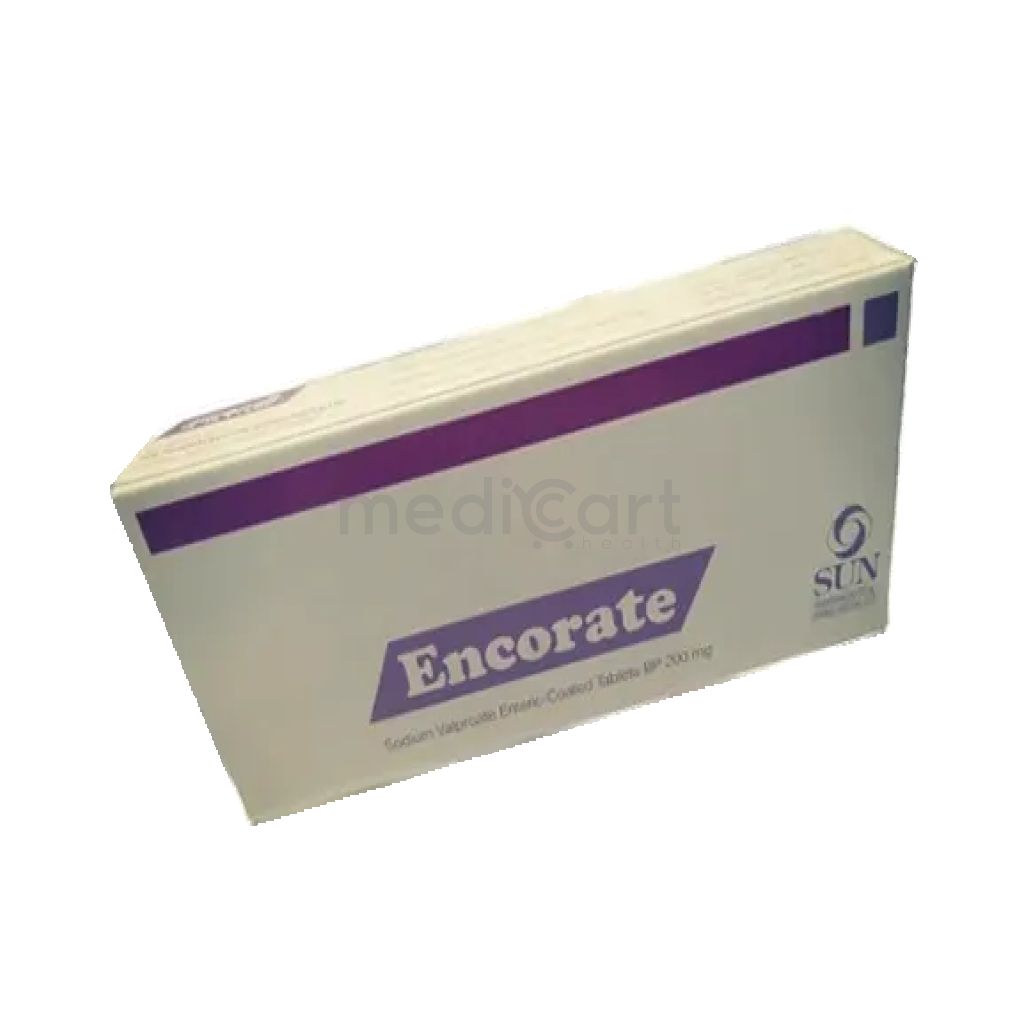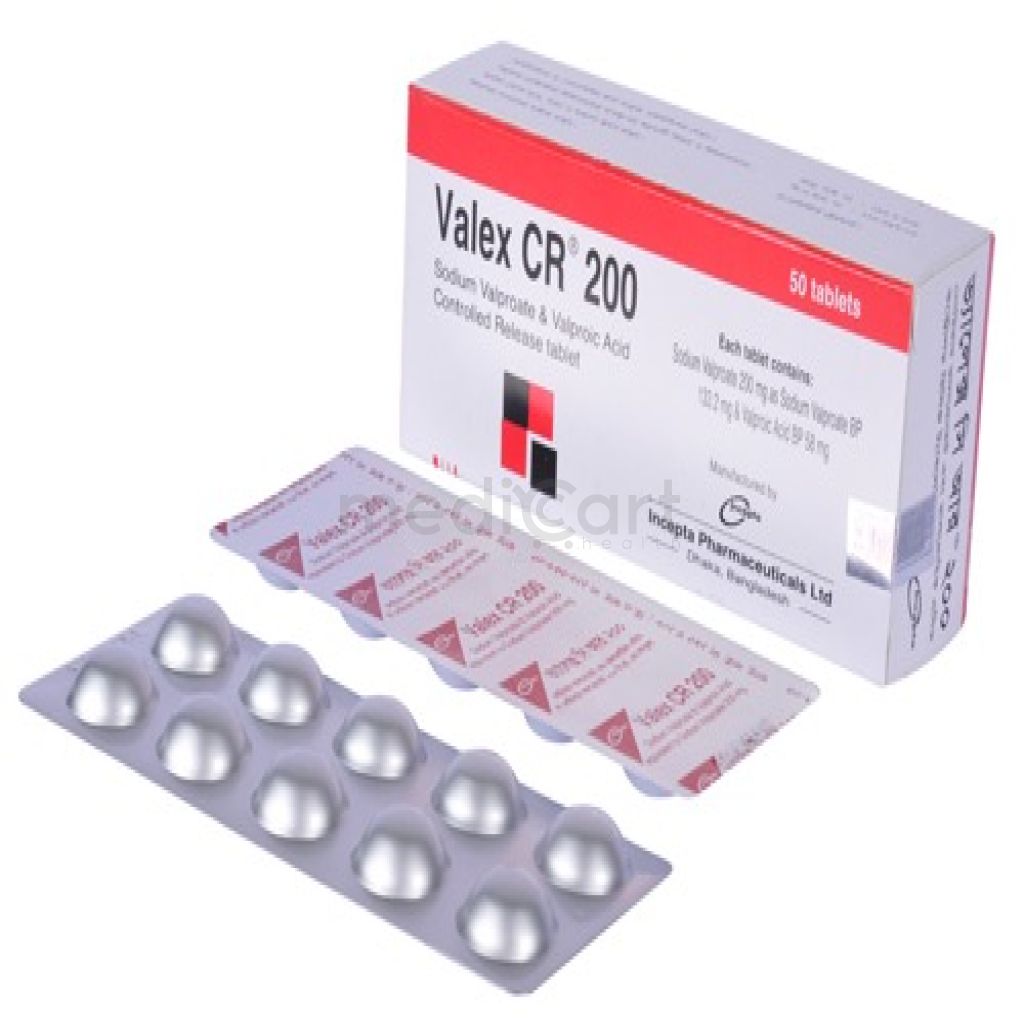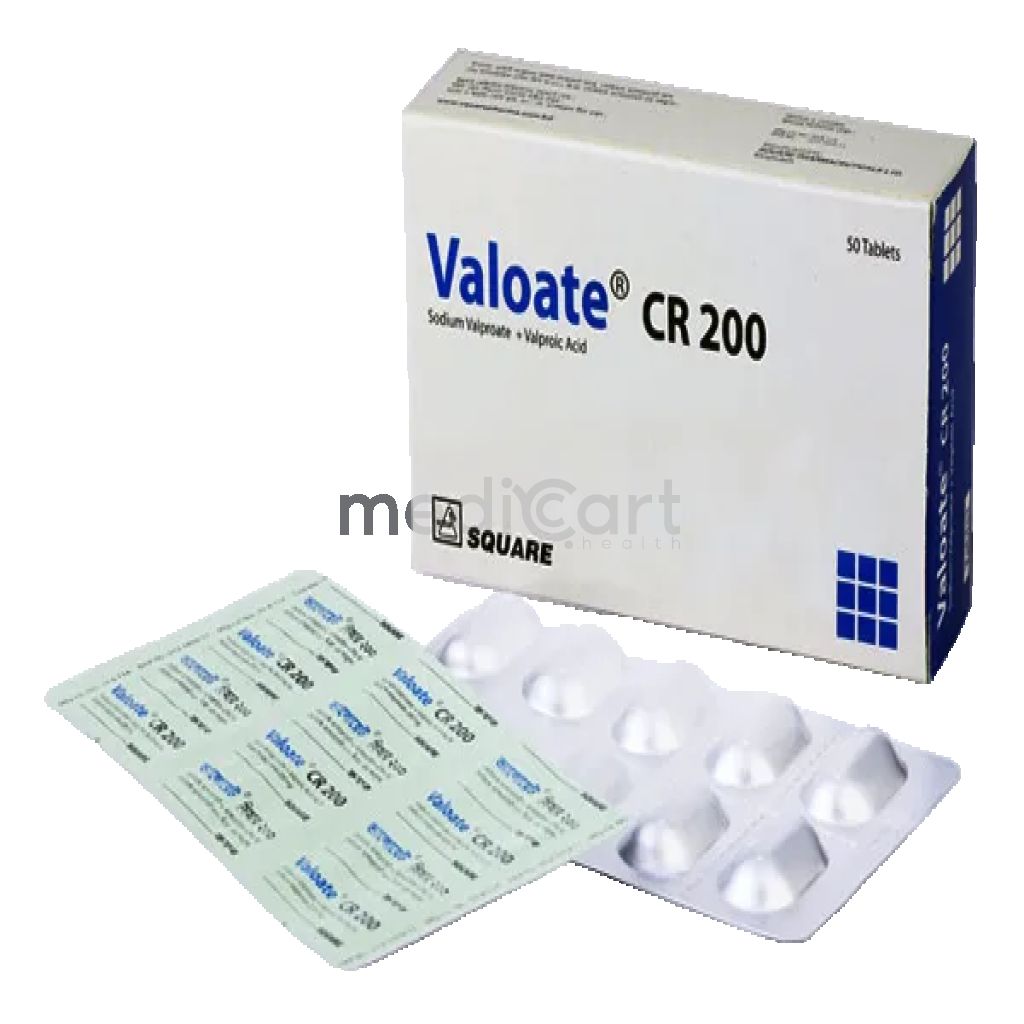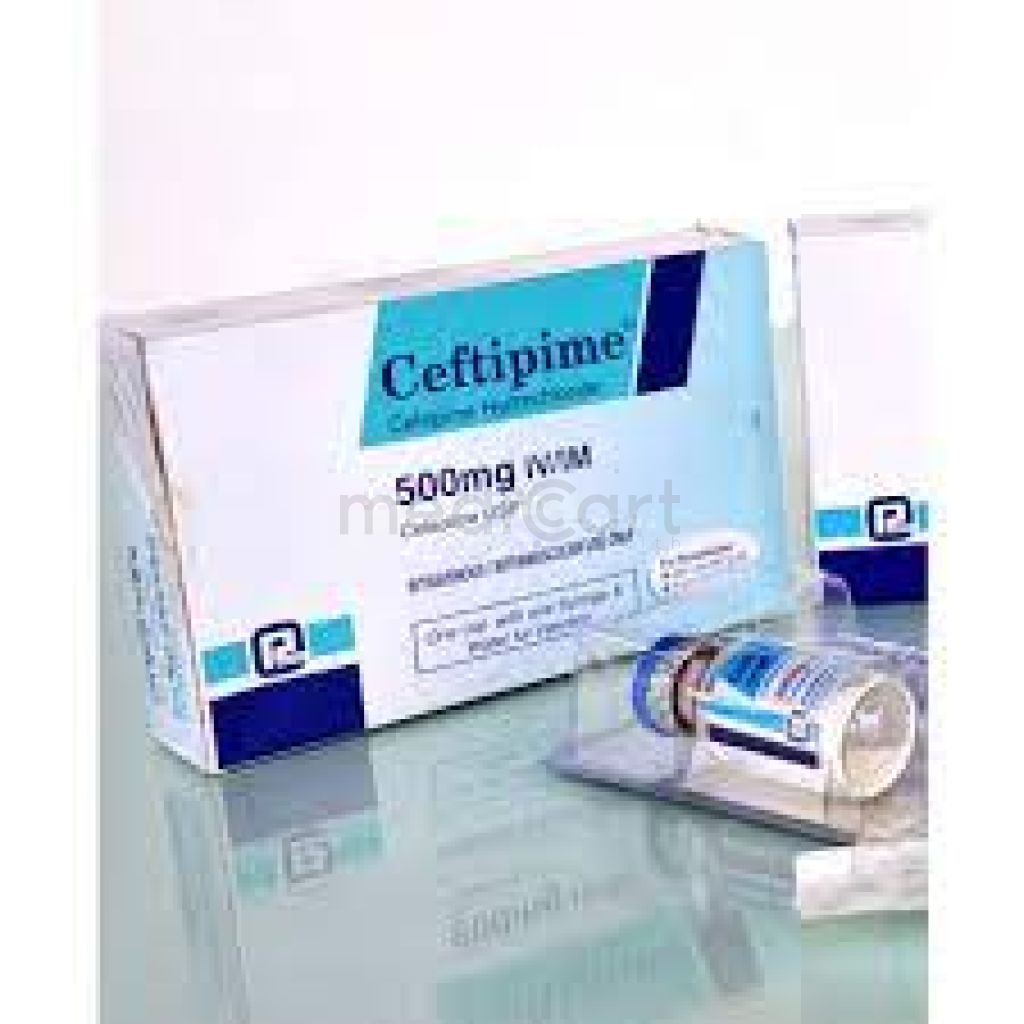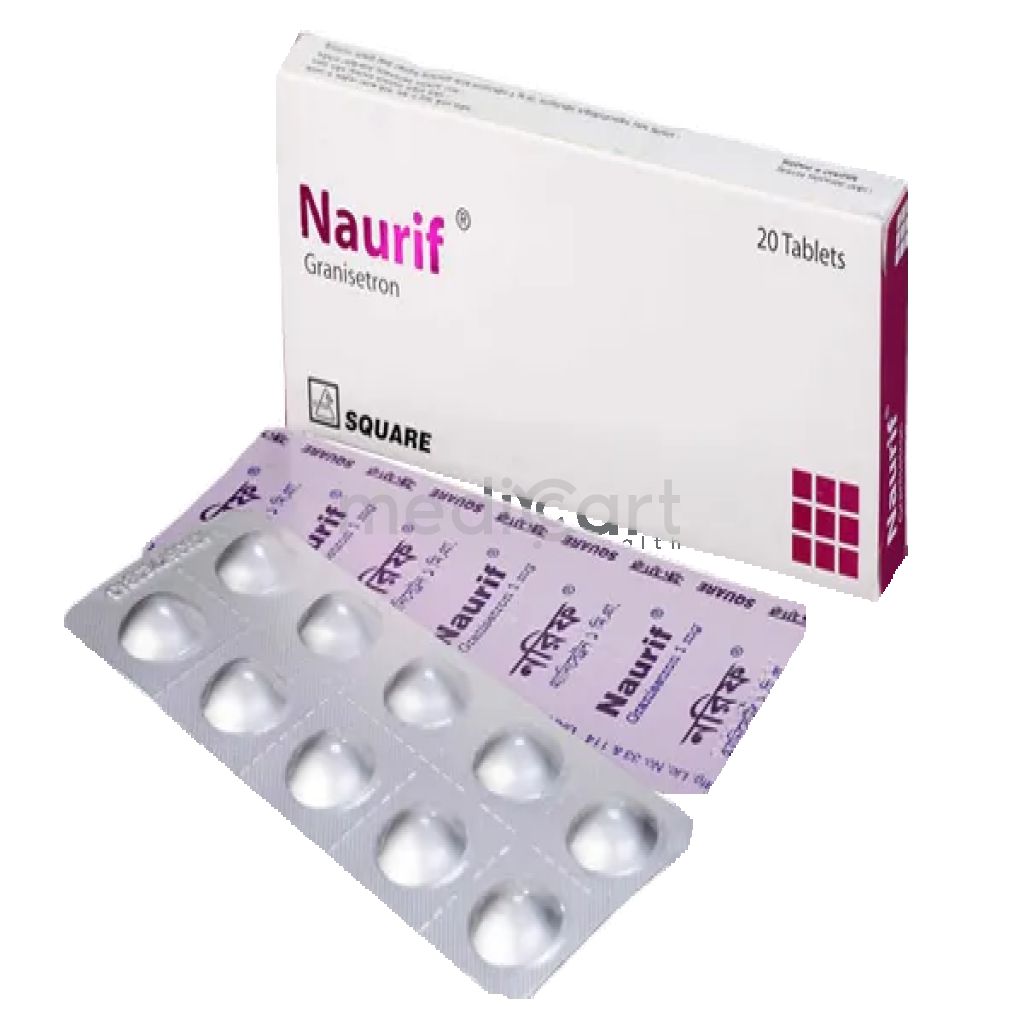

Proval CR - 300 MG
Tablet
Pack Size :
8 Tablet x 1 Strip
Generics :
Sodium Valproate
Manufacturer :
General Pharmaceuticals Ltd.
Best Price *
TK
64.00
* Delivery will be done in Dhaka city only.
Alternative Product
More Information About - Proval CR - 300 MG
Description
Generic Name
Sodium Valproate (valproic acid)Precaution
Increased risk of hepatotoxicity in childn <2 yr, congenital metabolic disorders, organic brain disease or severe seizure disorders. HIV or cytomegalovirus (CMV) infection; SLE. Decrease dose or discontinue in patients w/ excessive somnolence, decreased food or fluid intake. Gradual withdrawal or transition to and from another type of antiepileptic therapy. Suspect hyperammonemic encephalopathy and measure ammonia levels in patients who develop unexplained lethargy, vomiting or changes in mental status. Immobilised patients or those who have insufficient sun exposure or calcium intake should consider vitamin supplementation. Decrease GI side effects by taking w/ meals, starting w/ low dose or taking the enteric coated formulations. Lactation. Patient Counselling Seek medical advice during first signs of pancreatitis (e.g. abdominal pain, nausea, vomiting and anorexia), blood and liver toxicity. Monitoring Parameters Monitor LFT before and during the 1st 6 mth of therapy. Monitor blood cell count (including platelet count), bleeding time and coagulation tests before the start of therapy or before surgery, and in cases of spontaneous bruising or bleeding. Monitor for atypical behaviour (e.g. suicidal ideation and behaviour) during and after therapy.Indication
Epilepsy, e.g. Partial seizures, Absence seizures (petit mal), Generalized tonic-clonic seizures (grand mal), Myoclonic seizures, Atonic seizures, Mixed seizures, Anxiety disorder, Posttraumatic stress disorder, Febrile convulsion, Anorexia nervosa, Panic attack, Migraine, bipolar disorder.Contra Indication
Preexisting or family history of hepatic dysfunction, active liver disease, porphyria; mitochondrial and urea cycle disorders. Hepatic impairment. Pregnancy.Dose
N/ASide Effect
>10% Nausea (31%),Headache (<31%),Increased bleeding time (26-30%),Thrombocytopenia (26-30%),Tremor (25%),Alopecia (<24%),Asthenia (16-20%),Infection (16-20%),Somnolence (16-20%),Amblyopia (11-15%),Diarrhea (11-15%),Diplopia (11-15%),Dizziness (11-15%),Dyspepsia (11-15%),Nystagmus (11-15%),Tinnitus (11-15%),Vomiting (11-15%) 1-10% Ataxia (<8%),Increased appetite (<6%),Rash (<6%),Abdominal pain (<5%),Tremor (<5%),Back pain (<5%),Mood changes (<5%),Anxiety (<5%),Confusion (<5%),Abnormal gait (<5%),Paresthesia (<5%),Hallucinations (<5%),Catatonia (<5%),Dysarthria (<5%),Tardive dyskinesia (<5%),Vertigo (<5%),Irregular menses (<5%),Weight gain (4%) Frequency Not Defined Anorexia,Acute pancreatitis (may be life-threatening),Hepatic toxicity,Hyperammonemia,Weight loss,Fractures,Osteoporosis,Osteopenia,Decreased bone mineral density,Cerebral pseudoatrophyPregnancy Category
Name : Not Classified
Description
FDA has not yet classified the drug into a specified pregnancy category.Mode of Action
Valproate is a generic term used to describe valproic acid, its salts and derivatives. It is available in various forms including the sodium salts (valproate semisodium and sodium valproate), the amide derivative (valpromide), or as valproic acid. Valproate is a carboxylic acid anticonvulsant. It has been suggested that its antiepileptic activity is related to increased brain levels of ?-aminobutyric acid (GABA).Interaction
Increased risk of toxicity w/ bupropion. Increased risk of convulsions w/ mefloquine. Increased risk of carnitine deficiency w/ pivmecillinam and pivampicillin. Increased risk of hepatotoxicity and carbamazepine toxicity w/ a decrease in valproic acid levels w/ concurrent carbamazepine. Decreased valproic acid and increased ethosuximide serum levels w/ ethosuximide. Decreased valproic acid levels w/ carbapenems, rifampicin, phenytoin, phenobarbital (or primidone) and antineoplastic drug regimens. Increased valproic acid levels w/ felbamate and aspirin. Increased risk of hepatotoxicity w/ olanzepine. Concurrent use increased phenobarbital, nimodipine, nifedipine, lamotrigine, zidovudine, amitriptyline, nortriptyline and benzodiazepines levels. Concurrent use decreased tigabine and clozapine levels. Increased risk of absence status w/ clonazepam. Increased risk of hyperammonaemia w/ topiramate. Increased free valproic acid concentrations w/ highly protein bound drugs. Potentially Fatal: Concomitant carbapenem is not recommended as this may decrease valproate levels. Avoid concurrent salicylates in childn <3 yr due too risk of hepatotoxicity. Increased risk of hepatotoxicity w/ cosyntropin. Avoid ethanol as this may increase CNS depression.Pregnancy Category Note
Pregnancy Contraindicated for use in prophylaxis of migraine headaches in women who are pregnant and in women of childbearing potential who are not using effective contraception; for epilepsy or bipolar disorder, drug should not be used to treat women who are pregnant or who plan to become pregnant unless other medications have failed to provide adequate symptom control or are otherwise unacceptable Women with epilepsy who become pregnant while taking valproate should not discontinue therapy abruptly, as this can precipitate status epilepticus with resulting maternal and fetal hypoxia and threat to life; discontinuation of the drug may be considered prior to and during pregnancy in individual cases if seizure disorder severity and frequency do not pose serious threat to patient Maternal valproate use during pregnancy for any indication increases risk of congenital malformations, particularly neural tube defects including spina bifida, but also malformations involving other body systems (e.g., craniofacial defects including oral clefts, cardiovascular malformations, hypospadias, limb malformations) Risk is dose-dependent; a threshold dose below which no risk exists cannot be established; valproate polytherapy with other AEDs has been associated with increased frequency of congenital malformations compared with AED monotherapy; risk of major structural abnormalities is greatest during first trimester; however, other serious developmental effects can occur with valproate use throughout pregnancy There have been reports of hypoglycemia in neonates and fatal cases of hepatic failure in infants following maternal use of valproate during pregnancy Pregnant women taking valproate may develop hepatic failure or clotting abnormalities including thrombocytopenia, hypofibrinogenemia, and/or decrease in other coagulation factors, which may result in hemorrhagic complications in the neonate including death Evidence suggests that folic acid supplementation prior to conception and during the first trimester of pregnancy decreases risk for congenital neural tube defects in general population; not known whether risk of neural tube defects or decreased IQ in offspring of women receiving valproate is reduced by folic acid supplementation; dietary folic acid supplementation both prior to conception and during pregnancy should be routinely recommended for patients using valproate There have been reports of male infertility coincident with valproate therapy; in animal studies, oral administration at clinically relevant doses resulted in adverse reproductive effects in males Lactation Drug is excreted in human milk; data in the published literature describe presence of valproate in human milk; there are no data to assess effects of drug on milk production or excretion Developmental and health benefits of breastfeeding should be considered along with mother?s clinical need for therapy and any potential adverse effects on breastfed child from drug or from underlying maternal condition Monitor breastfed infant for signs of liver damage including jaundice and unusual bruising or bleeding; there have been reports of hepatic failure and clotting abnormalities in offspring of women who used valproate during pregnancyAdult Dose
Oral Complex Partial Seizures Indicated as monotherapy and adjunctive therapy for complex partial seizures that occur either in isolation or in association with other types of seizures PO: 10-15 mg/kg/day initially; increase by 5-10 mg/kg/day at weekly intervals; may increase dose up to 60 mg/kg/day Simple & Complex Absence Seizures Also indicated for use as sole and adjunctive therapy in the treatment of simple and complex absence seizures, and adjunctively in patients with multiple seizure types that include absence seizures PO: 15 mg/kg/day initially, divided q6-12hr; increase by 5-10 mg/kg/day at weekly intervals; may increase dose up to 60 mg/kg/day Migraine Indicated for prophylaxis of migraine headaches; there is no evidence of use for acute treatment 250 mg PO q12hr; adjust dose based on clinical response, not to exceed 1000 mg/day Bipolar Mania Indicated for treatment of manic episodes associated with bipolar disorder 750 mg/day PO in divided doses; adjust dose as rapidly as possible to desired therapeutic effect; not to exceed 60 mg/kg/day Hepatic impairment Administer lower doses Contraindicated in severe impairmentChild Dose
<10 years: Safety and efficacy not established Complex Partial Seizures Indicated as monotherapy and adjunctive therapy for complex partial seizures that occur either in isolation or in association with other types of seizures PO: 10-15 mg/kg/day initially; increase by 5-10 mg/kg/day at weekly intervals; may increase dose up to 60 mg/kg/day Simple & Complex Absence Seizures Indicated for use as sole and adjunctive therapy in the treatment of simple and complex absence seizures, and adjunctively in patients with multiple seizure types that include absence seizures >10 years 250 mg PO q12hr; adjust dose based on clinical response up to 1000 mg/dayRenal Dose
Renal impairment No adjustment necessaryAdministration
N/ADisclaimer
The information provided herein are for informational purposes only and not intended to be a substitute for professional medical advice, diagnosis, or treatment. Please note that this information should not be treated as a replacement for physical medical consultation or advice. Great effort has been placed to provide accurate and comprehensive data. However, Medicart along with its authors and editors make no representations or warranties and specifically disclaim all liability for any medical information provided on the site. The absence of any information and/or warning to any drug shall not be considered and assumed as an implied assurance of the Company.

